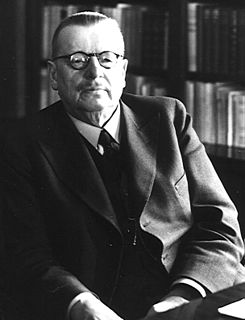
Juho Kusti Paasikivi was the seventh President of Finland (1946–1956). Representing the Finnish Party and the National Coalition Party, he also served as Prime Minister of Finland, and was an influential figure in Finnish economics and politics for over fifty years. He is remembered as a main architect of Finland's foreign policy after the Second World War.

Patriotic People's Movement was a Finnish nationalist and anti-communist political party. IKL was the successor of the previously banned Lapuan liike. It existed from 1932 to 1944 and had an ideology similar to its predecessor, except that IKL participated in elections — with limited success.

The Fennomans were members of the most important political movement (Fennomania) in the 19th-century Grand Duchy of Finland, built on the work of the fennophile interests of the 18th and early-19th centuries.
The Senate of Finland combined the functions of cabinet and supreme court in the Grand Duchy of Finland from 1816 to 1917 and in the independent Finland from 1917 to 1918.

The Paasikivi-Kekkonen doctrine was a foreign policy doctrine established by Finnish President Juho Kusti Paasikivi and continued by his successor Urho Kekkonen, aimed at Finland's survival as an independent sovereign, democratic, and capitalist country in the immediate proximity of the Soviet Union.

The war-responsibility trials in Finland were trials of the Finnish wartime leaders held responsible for "definitely influencing Finland in getting into a war with the Soviet Union and United Kingdom in 1941 or preventing peace" during the Continuation War, the Finnish term for their participation in the Second World War from 1941–1944. Unlike other World War II war-responsibility trials, the Finnish trials were not international. The trials were conducted from November 1945 through February 1946 by a special court consisting of the presidents of the Supreme Court of Finland, the Supreme Administrative Court of Finland, a professor from the University of Helsinki and twelve MPs appointed by the Parliament of Finland.
Parliamentary elections were held in Finland on 17 and 18 March 1945. The broad-based centre-left government of Prime Minister Juho Kusti Paasikivi remained in office after the elections.
Peace opposition (Rauhanoppositio) was a Finnish cross-party movement uniting both bourgeois politicians like Paasikivi, Kekkonen, Sakari Tuomioja etc. and social democrats, aiming at stepping out of the Continuation war and finding a way to conclude peace with the Soviet Union. The number of MPs belonging to this group was rather small at first, but it gained influence as the military situation worsened. After the signing of armistice, Paasikivi established his cabinet, which included members of the previous opposition group.
Parliamentary elections were held in Finland on 7 and 8 March 1954.
Juho is a male given name. It is an Estonian and Finnish variation of John. The name day for Juho in Finland is on June 24. Close variations of Juho are Johannes, Juhan, Juhana, Juhani, Juha, Jussi,Jukka, Jani and Janne.

Wilhelm Aleksander Thesleff was a Finnish general, first Minister of Defence of Finland and briefly the commander in chief of the Finnish army.
Juho Kusti Paasikivi's first senate was the second Senate and de facto Government of independent Finland. Its time period was May 27, 1918 – November 27, 1918.
Juho Kusti Paasikivi's cabinet was the 29th government of Republic of Finland. Cabinet's time period was from November 17, 1944 to April 17, 1945. It was Majority government.
Juho Kusti Paasikivi's third cabinet was the 30th government of Republic of Finland. Cabinet's time period was from April 17, 1945 – March 26, 1946. It was Majority government.

Two-stage presidential elections were held in Finland in 1950, the first time the public had been involved in a presidential election since 1937 as three non-popular elections had taken place in 1940, 1943 and 1946. On 16 and 17 January the public elected presidential electors to an electoral college. They in turn elected the President. The result was a victory for Juho Kusti Paasikivi, who won on the first ballot. The turnout for the popular vote was 63.8%. President Paasikivi was at first reluctant to seek re-election, at least in regular presidential elections. He considered asking the Finnish Parliament to re-elect him through another emergency law. Former President Ståhlberg, who acted as his informal advisor, persuaded him to seek re-election through normal means when he bluntly told Paasikivi: "If the Finnish people would not bother to elect a President every six years, they truly would not deserve an independent and democratic republic." Paasikivi conducted a passive, "front-porch" style campaign, making few speeches. By contrast, the Agrarian presidential candidate, Urho Kekkonen, spoke in about 130 election meetings. The Communists claimed that Paasikivi had made mistakes in his foreign policy and had not truly pursued a peaceful and friendly foreign policy towards the Soviet Union. The Agrarians criticized Paasikivi more subtly and indirectly, referring to his advanced age, and speaking anecdotally about aged masters of farmhouses, who had not realized in time that they should have surrendered their houses' leadership to their sons. Kekkonen claimed that the incumbent Social Democratic minority government of Prime Minister K.A. Fagerholm had neglected the Finnish farmers and the unemployed. Kekkonen also championed a non-partisan democracy that would be neither a social democracy nor a people's democracy. The Communists hoped that their presidential candidate, former Prime Minister Mauno Pekkala, would draw votes away from the Social Democrats, because Pekkala was a former Social Democrat. The Agrarians lost over four per cent of their share of the vote compared to the 1948 parliamentary elections. This loss ensured Paasikivi's re-election. Otherwise Kekkonen could have been narrowly elected President - provided that all the Communist and People's Democratic presidential electors would also have voted for him.

Indirect presidential elections were held in Finland in 1946. In 1944 the Parliament had passed a law that enabled Carl Gustaf Emil Mannerheim to serve a six-year term. However, he resigned on 4 March 1946, giving as his reason his declining health and his view that the tasks he had been selected to carry out had been accomplished. An election was held in Parliament to appoint his successor. Juho Kusti Paasikivi was elected with 159 of the 200 votes. Mannerheim had suffered from poor health since 1945, and he had vacationed abroad from November 1945 to January 1946. He had been concerned about the possibility of being indicted for abusing his office as the Commander-in-Chief of the Finnish army when approving of Finland's participation in the Continuation War (1941–1944) against the Soviet Union, and in an informal military alliance with Germany. He was not indicted, but eight leading wartime Finnish politicians were, and Mannerheim stayed abroad, mainly in Portugal, and on sick leave in the Red Cross's hospital in Helsinki from November 1945 to March 1946, to remain on the political background during the "war guilt" trial. Paasikivi was regarded by many Finnish politicians as the only realistic successor of Mannerheim, given his long diplomatic and foreign policy experience. Because many Karelian refugees would not yet have been able to vote in regular Finnish presidential elections until the autumn of 1946, due to their frequent changes of home town, the Finnish Parliament decided to pass an exceptional law to elect the new President. Former President K.J. Ståhlberg was not an official presidential candidate, but he received 14 sympathy votes in these presidential elections, because a few Finnish parliamentarians respected his preference for regular presidential elections.

Two-stage presidential elections were held in Finland in 1956. On 16 and 17 January the public elected presidential electors to an electoral college. They in turn elected the President. The result was a victory for Urho Kekkonen, who won on the third ballot over Karl-August Fagerholm. The turnout for the popular vote was 73.4%. Kekkonen had been Juho Kusti Paasikivi's heir apparent since the early 1950s, given his notable political skills for building coalitions, bargaining, risk-taking and adjusting his tactics, actions and rhetoric with regard for the prevailing political wind. On the other hand, his behaviour and political tactics, including sharp-tongued speeches and writings, utilization of political opponents' weaknesses, and rather close relations with the Soviet leaders, were severely criticized by several of his political opponents. Kekkonen's colourful private life, including occasional heavy drinking and at least one extramarital affair, also provided his fierce opponents with verbal and political weapons to attack him. Several other presidential candidates were also criticized for personal issues or failures. Despite all the anti-Kekkonen criticism, his political party, the Agrarians, succeeded for the first time in getting the same share of the vote in the presidential elections' direct stage as in the parliamentary elections. President Paasikivi had neither publicly agreed nor refused to be a presidential candidate. He considered himself morally obliged to serve as President for a couple of more years, if many politicians urged him to do so. Between the first and second ballots of the Electoral College, one National Coalitioner phoned him, asking him to become a dark-horse presidential candidate of the National Coalitioners, Swedish People's Party and People's Party (liberals). At first, Paasikivi declined, requiring the support of Social Democrats and most Agrarians. Then he moderated his position, but mistakenly believed that he would receive enough Social Democratic, Agrarian and Communist and People's Democratic electors' votes to advance to the crucial third ballot. This did not happen, because all Agrarian electors remained loyal to Kekkonen, all Social Democratic electors remained loyal to Fagerholm, and the Communist and People's Democratic electors split their votes to help Fagerholm and Kekkonen advance to the third ballot. The bitterly annoyed and disappointed President Paasikivi publicly denied his last-minute presidential candidacy two days later. Kekkonen was elected President with the narrowest possible majority, 151 votes to 149. For several decades, the question of who cast the decisive vote for him has been debated among Finnish politicians and some Finnish journalists.

Annikki Paasikivi (1898–1950) was a Finnish architect. She was the daughter of Juho Kusti Paasikivi. A scholarship fund at Aalto University is named for her. For a time she did a "woman's hour" on Finnish radio. Her two brothers died in the war.









